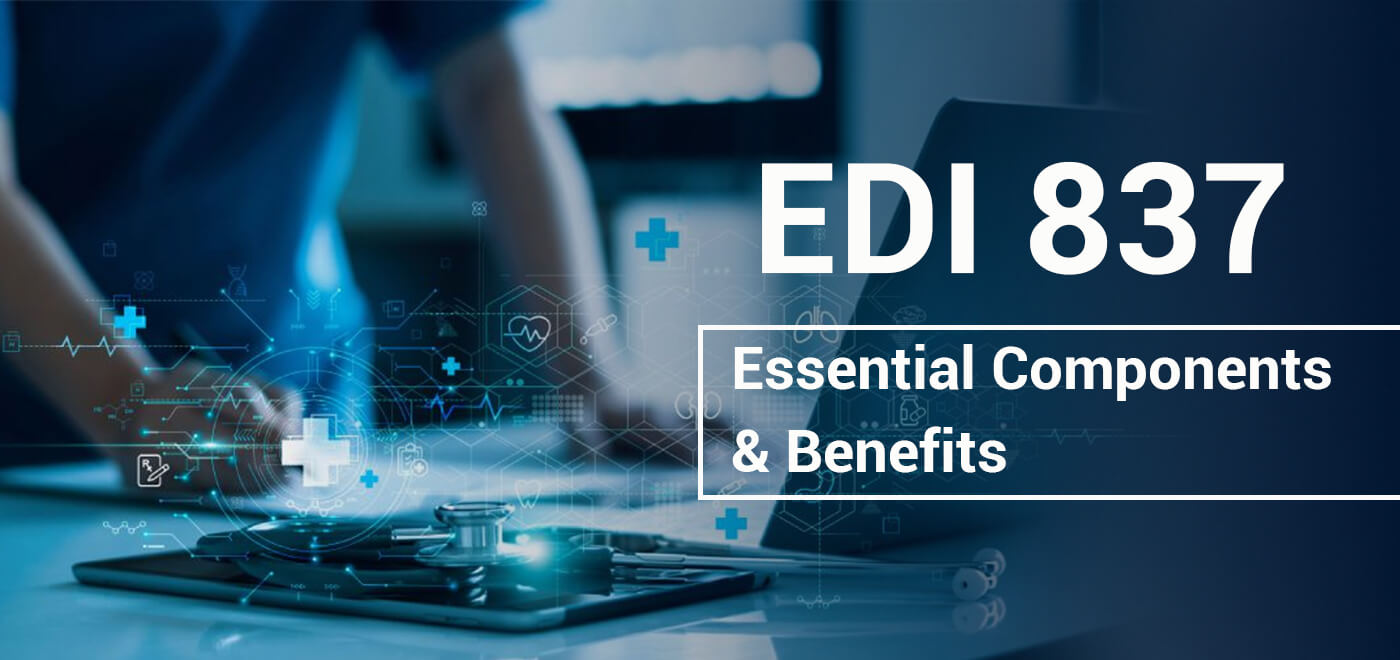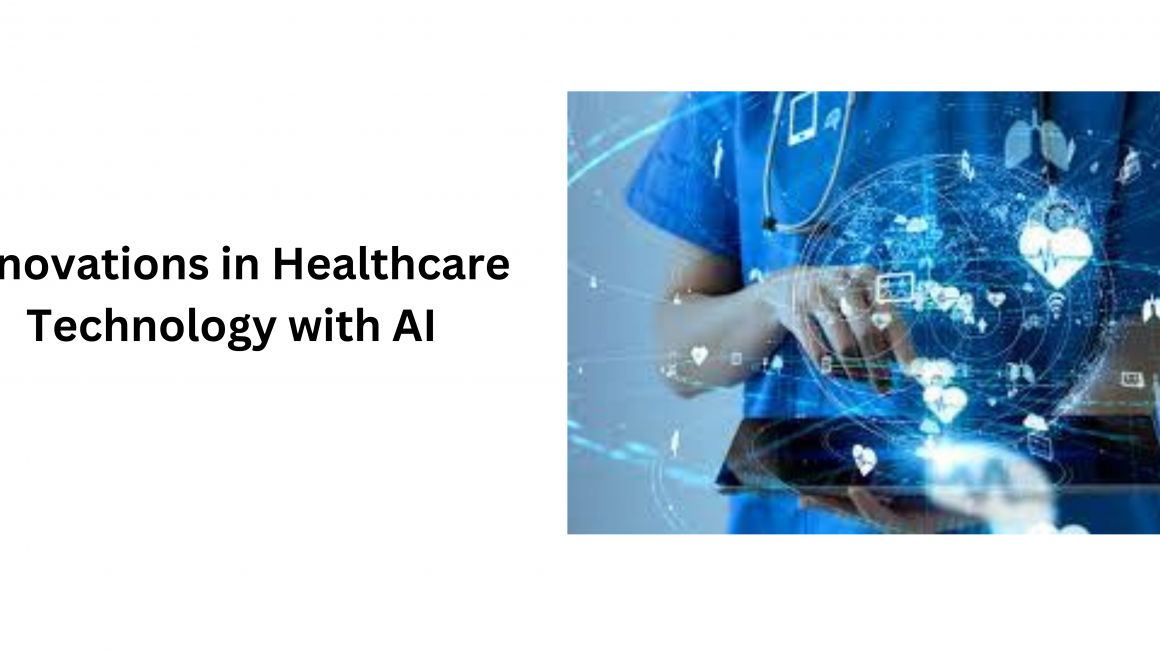The EDI 837 is a digital tool used for sharing health insurance claims data among doctors, payment centers, and insurance companies. It is important for healthcare because it helps in sharing patient information quickly and correctly. Therefore, this helps with processing claims and getting paid faster. Hence, the 837 EDI file is at the heart of the medical billing system, as it cuts down mistakes and speeds up communication.
Why EDI 837 is Important for Healthcare
The EDI 837 is very important in healthcare because of the many good things it brings:
- Easier Data Sharing: The EDI 837 lets large amounts of data be sent between different groups in healthcare, for example, doctors, insurance companies, and payment centers. Hence, this makes sharing information much smoother and takes less time than doing it by hand.
- Better Accuracy and Speed: The standard design of EDI 837 makes sure all needed details are recorded right. In short, which cuts down mistakes from doing things by hand. Therefore, this leads to easier claim processing and quicker payments for healthcare workers.
- Stronger Safety and Following Rules: The 837 EDI solutions follow strict safety steps and rules, like the Health Insurance Portability and Accountability Act (HIPAA). So this makes sure private patient information is shared safely and secretly, which builds trust and dependability in healthcare.
- Lower Office Costs: By getting rid of paperwork and manual data entry, using EDI 837 cuts down office costs. Hence, this lets healthcare workers use their resources better and focus more on taking care of patients.
As a result, the EDI 837 is a great tool that brings many good things to healthcare. By making data sharing efficient, improving accuracy, and following strict safety and rule steps. Hence, the EDI 837 makes way for a more helpful and trustworthy healthcare billing process.
Key Components of EDI 837
Starting Section
The starting section of an 837 EDI has important information about the groups in the healthcare deal.
- Insurance Company Info: Insurance company information is about the company or group in charge of handling the healthcare claim. This has the company’s name, address, and ID number.
- Doctor Info: Doctor information is about the doctor or place giving medical help. This has the doctor’s name, address, tax ID numeral, and NPI, which stands for National Provider Identifier.
- Billing Info: Billing information is about the group in charge of sending the claim to the insurance company. This could be the doctor or a special billing group.
Claim Section
The claim section of an EDI 837 has key information about the patient and the medical help given.
Patient details have important information about the patient, like their name, birth date, gender, address, and insurance policy details.
Illness codes, usually shown by the International Classification of Diseases (ICD) codes, tell the patient’s health problems or signs. Hence, these codes are needed to find out if the given help was needed.
Treatment codes, which are typically displayed as Current Procedural Terminology (CPT) or Healthcare Common Procedure Coding System (HCPCS) codes, indicate the medical assistance provided to the patient.
Loop Design
The loop design in an EDI 837 arranges data in a step-by-step way, putting related information together.
- Patient Loop: The patient loop has the patient’s details and other important information about the person getting medical help.
- Subscriber Loop: The subscriber loop contains details regarding the individual who holds the insurance policy, which may or may not be the same person as the patient.
To make sure the data exchange is right and fast, many healthcare workers use EDI tools from special EDI solution providers.
Types of EDI 837 Transactions
The realm of Electronic Data Interchange, known as EDI, has many transaction types. The EDI 837 transaction is one of the most crucial in the healthcare field. It helps make data exchange accurate, quick, and smooth. It’s important to know about these, as each has unique uses.
EDI 837 Institutional
Let’s start with EDI 837 Institutional. It’s mainly for hospitals, nursing facilities, and other such institutions. It streamlines transactions and allows smooth data flow between institutions and payers. This format can handle various institutional claims, such as inpatient, outpatient, home health care, and hospice services. Using EDI 837 Institutional improves the effectiveness of these organizations.
EDI services using EDI 837 Institutional make data exchange more efficient. It can send a lot of information, from patient details to the services given. This eliminates the need for manual data entry, reduces errors, and improves efficiency.
EDI 837 Professional
Next is the EDI 837 Professional. It’s mainly for physicians, labs, and other professional healthcare providers. It handles non-institutional healthcare services, such as office visits, surgery, radiology, and lab tests.
The main strength of EDI 837 Professional is making billing easier. EDI offers this version to simplify the claims process. This makes data submission straightforward and effective. It aids in faster claim approvals and reimbursements. Also, it allows providers to keep track of each transaction, thus giving them better financial control.
EDI 837 Dental
Finally, let’s talk about EDI 837 Dental. This variant is for dental practices. It makes the billing process for dental procedures simpler. It improves communication between dental offices and insurance companies.
EDI 837 Dental brings many benefits, like the other versions. It makes data exchange easier, streamlines administrative tasks and boosts patient care. Using EDI with EDI 837 Dental improves accuracy, speed, and efficiency. It lets dental practices focus more on patient care and less on paperwork.
The EDI 837 Workflow
In the broad and tricky field of healthcare management, the arrival of Electronic Data Interchange (EDI) has marked a turning point. Its organized and simplified process makes handling health-related transactions straightforward. To fully grasp this marvel, let’s break down the EDI 837 workflow. This journey, from gathering patient data to creating the EDI 835 payment record, offers a peek into an EDI transaction’s inner workings.
Collecting Patient Info
The EDI 837 workflow starts with an essential task – collecting patient details. All medical transactions depend heavily on the data collected during this phase. Healthcare workers take great care in noting every detail, from patient demographics to their health insurance particulars.
EDI offers systems that come with handy data-gathering tools. These digital platforms snap up all the needed information, skipping the fuss of paper records. They build a strong base for the next steps in the workflow.
Making the EDI 837
After the collection of patient data, it’s time to create the EDI 837. This important step is crucial as the quality and accuracy of data play a significant role in each medical transaction. Providers of healthcare leave no stone unturned in recording all details, from the patient’s personal information to their health insurance specifics.
EDI offers software that’s efficient in collecting data. These digital tools do away with paper documentation, ensuring a smooth start for the stages that follow in the workflow.
Sending the EDI 837
After the collection of patient data, it’s time to create the EDI 837. This important step is crucial as the quality and accuracy of data play a significant role in each medical transaction. Providers of healthcare leave no stone unturned in recording all details, from the patient’s personal information to their health insurance specifics.
EDI offers software that’s efficient in collecting data. These digital tools do away with paper documentation, ensuring a smooth start for the stages that follow in the workflow.
Getting and Handling the EDI 837
Once the payer gets the EDI 837 transaction, they review and process the claim. If approved, they create an EDI 835 transaction, also known as a payment advice note, showing payment details, deductions, and reasons for any claim rejections.
EDI provides a double advantage here. They help in receiving and understanding the EDI 835 transaction. They also let healthcare providers track the status of their claims, providing clarity and control during the process.
Making an EDI 835 Payment Note
The final step is payment. Here, the payer uses the EDI 835 transaction to outline the payment made to the healthcare provider. This document acts as a receipt, giving a detailed record of the transaction for both parties involved.
EDI, with its solutions, makes this last stage easy to navigate. They ensure that the healthcare providers get and properly understand the payment note, marking a successful end to our journey through the EDI 837 workflow.
Also Read:- EDI 834 Benefit Enrollment And Maintenance Specifications
Benefits of Implementing EDI 837
The transformational impact of Electronic Data Interchange (EDI) in the healthcare sector is undebatable. Among the different EDI standards, EDI 837 has surfaced as a crucial player, specifically in processing healthcare claims. It has offered advantages that have revolutionized the healthcare industry.
Smoother Data Exchange
One of the primary advantages of adopting EDI 837 is its ability to enable smooth and efficient data exchange. Traditionally, data exchange in the healthcare industry was burdened with paperwork, manual processes, and high chances of error. However, the introduction of EDI 837 has turned this around.
Now, health information flows smoothly from one entity to another, ensuring a seamless process from claim submission to settlement. Electronic Data Interchange providers offering EDI 837 services ensure this seamless flow, making it easy to exchange large volumes of data swiftly and securely.
Better Accuracy and Speed
In healthcare, you need to be quick and exact. Even a small mistake can lead to claim denials and delayed payments. Luckily, EDI 837 can help with this.
By automating data entry, it cuts down on human mistakes. This leads to more exact data being submitted. It also makes processing quicker. The days of waiting for manual claim handling are over. With EDI 837, processing claims is nearly instant. This leads to quicker payments.
Improved Safety and Rules-Following
EDI 837 also helps with following rules and keeping data safe. Healthcare data is sensitive and needs to be kept secure. It also needs to follow strict rules.
EDI 837 is made to meet tough industry standards like HIPAA. This protects patient privacy and makes sure data stays intact. Also, an EDI outsourcing company adds strong safety measures to their offerings. This protects data from breaches and builds trust with patients and healthcare providers.
Faster Payments and Cash Flow
EDI 837 helps with rule-following and data safety. Healthcare data is sensitive, so it’s key to keep it secure and follow rules.
EDI 837 meets tough standards like HIPAA, ensuring patient privacy and data integrity. EDI providers also add strong safety measures to their services. This keeps data safe from breaches and builds trust with patients and healthcare providers.
Lower Admin Costs
Last but not least, EDI 837 can cut down on admin costs. This is done by getting rid of manual paper-based tasks, cutting down on mistakes that need fixing, and reducing the time spent on claim submissions and follow-ups.
EDI providers can help healthcare groups save a lot on admin work. This lets them put more resources towards patient care and other important areas.
Common EDI 837 Challenges and Solutions
Bringing EDI 837 into the healthcare system surely benefits providers greatly. But, as with any change, it comes with its fair share of hurdles. The good news is, with proper knowledge of these hiccups and the right tactics, you can turn these roadblocks into stepping stones.
Not Complete or Wrong Data
EDI 837 file often stumbles upon issues like incomplete or incorrect data. Even a tiny error could lead to claim rejections and payment delays. This mostly stems from human slip-ups, system bugs, or sometimes vague instructions.
How to fix this? Set up strict data checks. You can use automated controls at multiple stages to ensure all the data fields are rightly filled. Regular audits can spot common mistakes, helping you to set specific rules to prevent these errors from happening again. Regularly refining the validation process and sticking to the best practices while handling EDI 837 claims will guarantee accurate and complete data.
Problems with Different Systems Working Together
Another snag in dealing with EDI 837 files is syncing different systems. Healthcare providers often use varied systems for patient care, billing, and claim processing. However, not all these systems might play well with each other or with the EDI 837 segments.
To fix this, you can team up with a seasoned EDI service provider. They can help design an integrated solution allowing all systems to interact seamlessly. This can be done by transforming data into a common format that every system can decode, ensuring a smooth flow of EDI 837 claims across multiple platforms.
Staying Updated with Rule Changes
The healthcare field is always changing, with regular tweaks in the rules. Keeping up with these shifts is key while dealing with EDI 837. Failure to comply can lead to penalties or EDI claims 837 rejections.
The fix? Regular training and updates about rule changes, industry norms, and best practices. Also, pairing with a reliable EDI service provider ensures that your system stays current, as they constantly update their software to match the latest rules.
Teaching and Bringing in Staff
Training staff and integrating them into the EDI 837 process can be another stumbling block. Not everyone may be familiar with the EDI 837 format or know how to handle EDI 837 claims.
To resolve this, consider investing in robust training programs that deep dive into EDI 837 and its segments. Training should be ongoing, with frequent refreshers and updates. This method ensures all staff members are in sync when it comes to EDI 837, leading to fewer errors and smoother processes.
Selecting the Right EDI 837 Solution
Finding the best Electronic Data Interchange (EDI) option can improve your healthcare work. Think of it as finding a puzzle piece that fits perfectly, boosting your efficiency and rules compliance.
Important Features to Look For
When it comes to EDI, they’re not all the same. Knowing the necessary features is crucial. A key feature is sticking to EDI 837 specifications. The option should easily create, send, and receive EDI 837 files.
The system should offer strong data checks to cut down on mistakes. A clear user interface that simplifies tasks is just as key, letting users focus on their main work, not trying to understand the system. Good customer support is vital for any EDI option, helping fix any technical problems quickly.
Also, blending with your current systems and software is key. This blend allows easy data transfer and reduces manual data entry mistakes.
Looking at Different EDI Companies
No single provider can meet all your specific needs. So, comparing various EDI service providers is key in choosing the right EDI 837 option. Rate providers based on what they offer, their healthcare experience, and their reputation.
While considering features and EDI 837 guideline compliance, also check for flexibility. Can they adjust the solution to fit your unique needs? Customer feedback and case studies offer useful insights into the provider’s trustworthiness and the quality of their customer service.
Finally, consider the value for money of their option. The least expensive may not always be the best. Look for a provider that strikes a good balance between cost and value.
Putting EDI 837 in Place and Joining
Once you’ve chosen your ideal EDI 837 option and provider, the next task is setting it up and integrating it into your operations. This setup should be well thought out to avoid upsetting your current operations. The provider should be available to offer guidance and support throughout this task.
One main consideration during setup is making sure all users know how to use the new system. They should know how to create, send, and receive EDI 837 files and how to deal with any problems that come up.
Integration with current systems should be smooth, allowing easy data transfer between various systems. Any problems at this stage could cause data mistakes, so having technical support ready to fix any issues is key.
Above all, picking the right EDI 837 option takes careful thought about several factors. From the option’s features to the EDI service provider’s reputation and the setup process, each step is key to the successful integration of EDI 837 into your operations. With the right option, you can streamline your healthcare transactions, boost accuracy, and improve your overall efficiency.
Best Practices for EDI 837 Implementation
Taking on Electronic Data Interchange (EDI) is quite a thrill. It makes your tasks easier, cuts down mistakes, and boosts your work speed. But, you must take care to do it right. We’ll take you through the top methods for using EDI transactions 837.
Checking Data and Fixing Errors
Data truth is the heart of any winning EDI use. It confirms your dealings are precise and trustworthy, bettering your choices and reducing disputes. Keeping data truth calls for constant checks and error fixing as a daily part of your tasks.
Begin by often checking your EDI transactions. These reviews let you spot any data mistakes before they turn into pricey issues. If you find mistakes, fix them at once. EDI transactions have exact format needs, and even tiny mistakes can cause rejected dealings.
Also, use strong data-checking tools to spot and stop errors. This habit will keep your data neat and exact, boosting the effectiveness of your EDI transactions.
Updating Systems Often and Taking Care of Them
Just as with any other tech system, your EDI solution calls for frequent updates and upkeep to keep it steady. This is vital for the smooth working of your EDI transactions.
Often updating your system not only shields your solution from possible security risks but also betters its working and adds new features. Plan these updates at a time when they will least disturb your tasks.
Upkeep is just as key. This can involve tasks like clearing old data, tuning system settings, and fixing any tech issues. It’s like keeping your car in top shape – it’s simpler to handle small issues often than deal with a big breakdown later.
Making Clear Ways to Communicate
Clear talk is a key point in successful EDI use. It confirms everyone involved in EDI transactions is on the same page, cutting down misunderstandings and errors.
Set clear talk paths within your group. This could involve frequent meetings, email news, or a special internal talk platform. Everyone should know whom to reach out to with any questions or worries linked to EDI transactions.
Also, keep an open talk with your EDI service supplier. They are a priceless resource for fixing tech issues, getting updates, and learning about best practices.
Monitoring and Reporting
Monitoring and reporting are vital parts of EDI transactions. They give you a clear view of your tasks, helping you spot trends, find issues, and make knowledgeable choices.
Use strong watching systems that can track your EDI actions in real-time. This will help you see any issues as they happen, letting you handle them at once before they get bigger.
Also, set regular reporting habits. Reports can give insights into your EDI performance over time, underline areas for bettering, and show your compliance with industry standards. They can be an invaluable tool for planning and decision-making.
Conclusion
Embracing the Future of Healthcare Transactions with EDI 837
EDI 837 has changed how healthcare workers handle and process claims, giving many benefits like better data exchange, more accuracy, and lower costs. By knowing the important parts of EDI 837 and using the best tool, providers can get ready for the future of healthcare and enjoy the good things it brings.
As healthcare keeps changing, using EDI 837 will be very important for providers who want to stay ahead and make patients happy. EDI 837 gives a new, easy, and safe way to handle claims, letting providers:
- Make their claims work better, cutting down mistakes and work.
- Follow the always-changing rules and standards of the industry.
- Make patients happier by fixing billing problems and making claims clearer.
To get ready for the future of healthcare, providers should choose the best EDI 837 tool, work with skilled EDI companies, and always teach their workers and make their systems better. By doing this, they can use EDI 837 format to its full power and help their organizations succeed in the complex world of healthcare.
Don’t let your group fall behind in the fast-changing world of healthcare. Get ready for the future by picking the best EDI 837 tool today. With TopOrgs, learn more about EDI 837, its good points, and how to use it well by talking to skilled EDI companies and looking at the different tools out there. Your group’s future success depends on it – act now!
FAQ’s
EDI 837 Institutional helps with claims from places like hospitals and nursing homes. On the flip side, EDI 837 Professional deals with doctors and healthcare experts and their services. EDI 837 Dental focuses only on dental services and their related claims.
EDI 837 helps make data exchange quicker and more accurate due to its structured format and automation. It cuts out manual data entry, lessening mistakes and speeding up the task. Additionally, standardising data ensures everyone – healthcare providers, insurance companies, and patients – understand the claim in the same way.
During EDI 837 implementation, you might face issues like wrong or incomplete data, problems integrating with different systems, changing regulations, and training new staff. These issues can be tackled by doing regular data checks for accuracy, using systems that work together, staying aware of industry updates, and continuous training for staff.
A perfect EDI 837 solution should work well with your existing systems, have strong data-checking tools, offer great support service, and comply with industry rules. Plus, it should be easy to use to make staff training and onboarding simpler.
EDI 837 standardized the claim process, making it easier for insurance companies to approve claims. Quicker approvals mean faster payments and better cash flow. Furthermore, fewer errors and disputes lead to smoother transactions. This also results in quicker payments.




